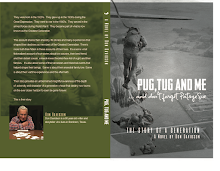WOULD BANNING FIREARMS REDUCE MURDER AND SUICIDE?
This is taken from a study at Harvard
A REVIEW OF INTERNATIONAL AND SOME DOMESTIC EVIDENCE
DON B. KATES* AND GARY MAUSER**
Would Banning Firearms Reduce Murder and Suicide? p. 685
In the United States, the murder rate doubled in the ten‐ year span between the mid‐1960s and the mid‐1970s. Since this rise coincided with vastly increasing gun sales, it was viewed by many as proof positive that more guns equal more death. That conclusion, however, does not follow. It is at least equally possible that the causation was reversed: that is, the decade’s spectacular increases in murder, burglary, and all kinds of violent crimes caused fearful people to buy guns.
The dubiousness of assuming that the gun sales caused the rise in murder rather than the reverse might have been clearer had it been known in this period that virtually the same murder rate increase was occurring in gunless Russia. Clearly there is little basis to assume guns were the reason for the American murder rate rise when the Russian murder rate exhibited the same increase without a similar increase in the number of guns.
The dubiousness of assuming that the gun sales caused the rise in murder rather than the reverse might have been clearer had it been known in this period that virtually the same murder rate increase was occurring in gunless Russia. Clearly there is little basis to assume guns were the reason for the American murder rate rise when the Russian murder rate exhibited the same increase without a similar increase in the number of guns.
Reliable information on both gun ownership and murder rates in the United States is available only for the period commencing at the end of World War II. Significantly, the decade from the mid‐1960s to the mid‐1970s is a unique exception to the general pattern that, decade‐by‐decade, the number of guns owned by civilians has risen steadily and dramatically but murder rates nevertheless have remained stable or even declined. As for the second half of the twentieth century, and especially its last quarter, a study comparing the number of guns to murder rates found that during the 25‐year period from 1973 to 1997, the number of handguns owned by Americans increased 160% while the number of all firearms rose 103%. Yet over that period, the murder rate declined 27.7%. It continued to decline in the years 1998, 1999, and 2000, despite the addition in each year of two to three million handguns and approximately five million firearms of all kinds. By the end of 2000, the total American gunstock stood at well over 260 million—951.1 guns for every 1,000 Americans—but the murder rate had returned to the comparatively low level prior to the increases of the mid‐1960s to mid‐1970s period.
In sum, the data for the decades since the end of World War II also fails to bear out that more guns equal more death mantra. The per capita accumulated stock of guns has increased, yet there has been no correspondingly consistent increase in either total violence or gun violence. The evidence is consistent with the hypothesis that gun possession levels have little impact on violence rates.
http://www.law.harvard/edu/students/orgs/jlpp/Vol30 No2 KsyrsMauseronline.pdf


0 Comments:
Post a Comment
<< Home